Fabric Focus: Bridge Traditional and Retro Styles With Chintz
http://decor-ideas.org 06/23/2015 04:13 Decor Ideas
Chintz is one of those fabrics people either love or hate. It gained popularity in the U.S. in the early 20th century when pioneering decorators Dorothy Draper and Elsie de Wolfe used copious amounts of the floral fabric to transform dark, Victorian spaces into light, brightly colored retreats.
Chintz is a major player in creating traditional and retro vibes. It has an air of romance, and translates well on curvilinear pieces. Like a lush garden, chintz comes in a vast array of designs and colors. Here’s how you can bring this fabric home.
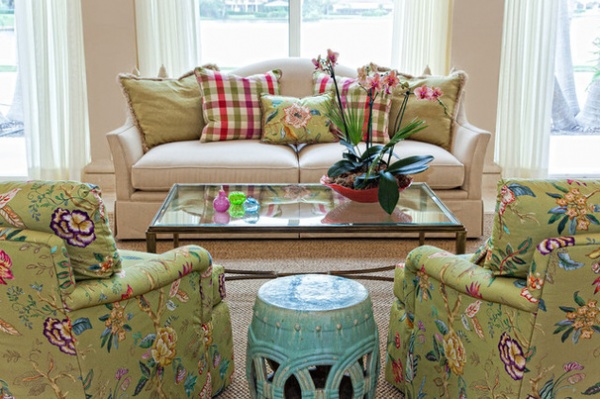
Chintz originated in India and made its way to Europe in the 1600s by way of Portugal, France and later England. Indian artisans either painted or printed with woodblocks colorful floral, botanical and animal designs onto cotton by employing a complex process using dyes, milk and wax.
France in particular experienced “chintz fever,” and in 1686 the French government outlawed chintz (or coton indienne) because the new fabric was affecting demand for local wool and silk products. Chintz was originally used for clothing but eventually found its way to interior design.
Back in the day, chintz was often used in the vein of “more is more.” People used it to cover every surface in their homes, from walls to drapery to seating. This may have contributed to chintz’s bad rap with some folks.
But with a dizzying number of patterns and colors to choose from, chintz is a jackpot of possibility.
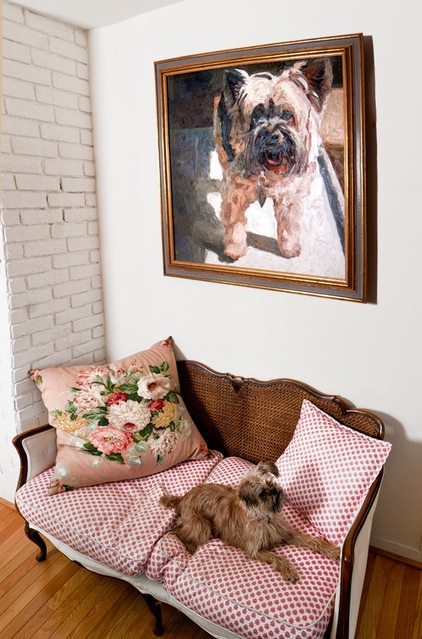
What Is Chintz?
There are two viewpoints on what chintz is: a glazed cotton fabric or a floral pattern on a solid background.
“Glazed cotton fabric” is the historical depiction of chintz. Today, the glaze, or shiny surface on chintz, is made by “calendering” the fabric. The fabric is treated with wax, starch or a resin and run between heated, pressurized rollers moving at different speeds, which burnishes the top layer.
Others view the term “chintz” more broadly to mean a style of floral design, whether on a fabric (glazed or unglazed), wallpaper or even a dinner plate.
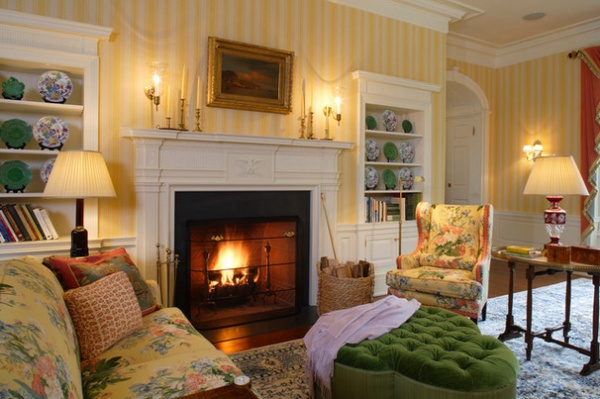
The Look: Traditional
Formal and traditional is chintz’s conventional image, as with the upholstery in this Philadelphia living room. While pretty and inviting, it also sends a message that this isn’t the room to spread out, eat popcorn and watch the game on TV.
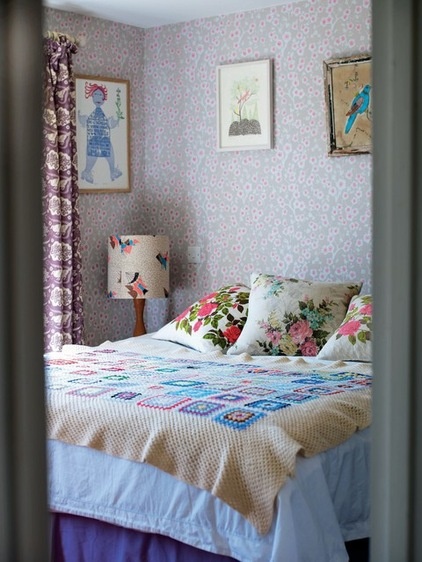
The Look: Retro
They say everything skips a generation and then becomes cool again. Chintz is one of those fabrics that can bridge formal traditionalism and retro cool.
Used sparingly, chintz easily mixes with other retro furnishings. Paired with a vintage afghan in this bedroom, the sweet trio of chintz pillows pays homage to an earlier time.
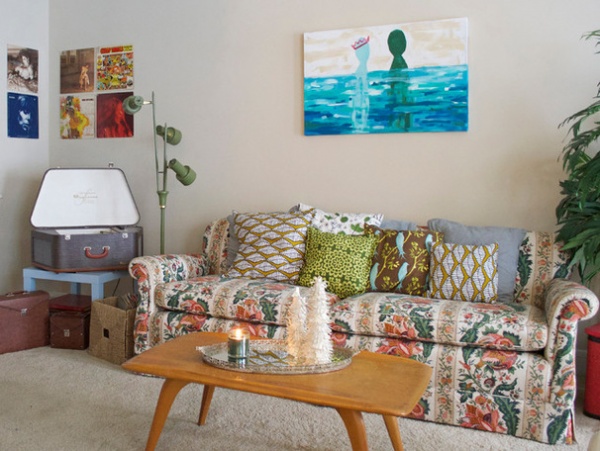
Here, a chintz-striped sofa anchors a delightful mix of mid-century items.
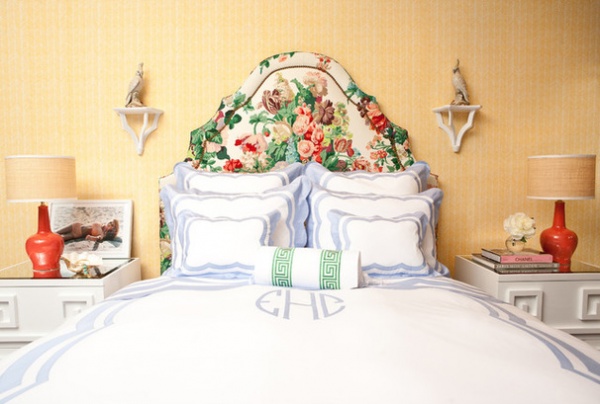
Benefits of Using Chintz
Takes the curves. Unlike many geometrics and stripes, the layering and abundance of flowers and foliage on most chintzes translates well on more intricate, curvilinear upholstery pieces, like the headboard shown here. In this project, the robust flower pattern and curvy headboard enhance each other. The large pattern repeat also allows for a taller headboard to accommodate higher ceilings without looking massive. A geometric or even solid wouldn’t have been as striking or visually “light.”
Interior designer Colleen Carney says chintz is one of her all-time favorite fabrics. “To give it some swagger,” she says, “I pair it with fresh and modern elements — clean lines, lacquer, geometrics and saturated colors.”
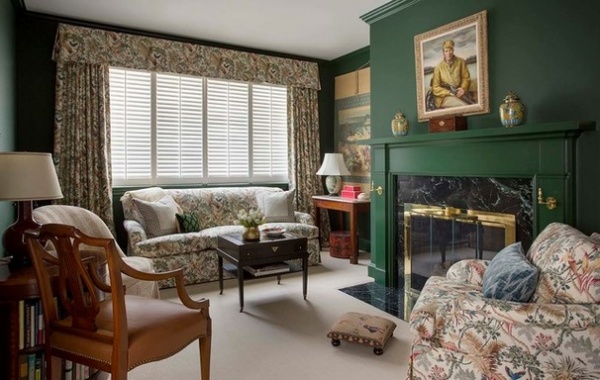
Like working with a box of crayons. Unlike most other fabrics that have two or three colors in their design, chintzes usually have a minimum of five colors. Many even have upward of 10, so it’s like being able to pull from an open box of crayons.
Designer Laura Wilmerding says she likes working with chintz because it offers many colors to play off of for wall color, upholstery and pillows. For the living room shown here, Wilmerding pulled the dark green from the chintz and used it for the wall color.
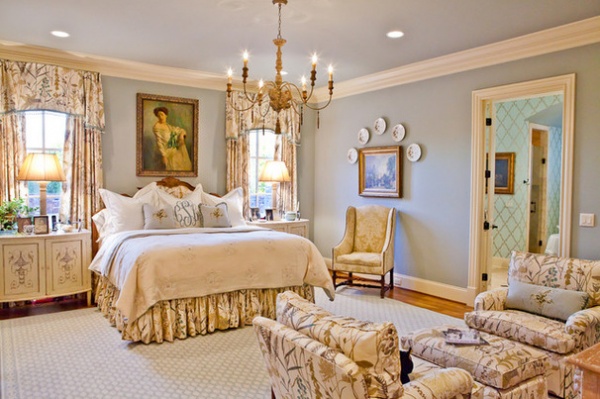
Soft and romantic. Go to a bed and breakfast and there’s likely to be some chintz somewhere in the room. Designer Eric Ross says he loves using chintz in bedrooms because it gives the space a romantic feel. Here, Ross uses a chintz called Botanical Fern from Wesley Hall on the bed skirt, draperies, chair and ottoman without overwhelming the space. While it has a substantial presence in the room, its effect is serene and elegant.
“When a chintz is glazed, it captures light beautifully, but the same element that makes it lovely at night can also be read as cheap or shiny,” he says. “So I particularly love unglazed chintzes because more clients are open to using them.”
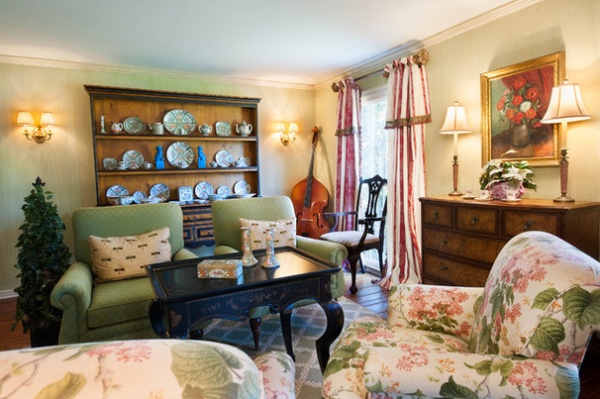
Cons of Using Chintz
Decidedly feminine. Some may view this as a pro, but chintz carries a dainty air that won’t work for everyone.
Granny-ish if overdone. If you don’t get the balance right, chintz might go a direction your tea cozy-collecting great-aunt Mildred might fancy. Wilmerding says that for projects with chintz, she likes to add modern textures, like boucle, mohair or grass cloth wallcovering. She frequently accessorizes with bronze, animal prints and lacquered boxes to help jazz up the space while keeping it classic.
Glaze wears off. If you like glazed chintz, be aware that the sheen wears away over time. This is less the case for chintzes made with the resin glazing, as the starch and wax variety are more easily removed, but you probably won’t know the manufacturing method when you’re buying. However, follow the cleaning instructions recommended by the manufacturer. Nothing lasts forever, of course, but this is a factor to be aware of.
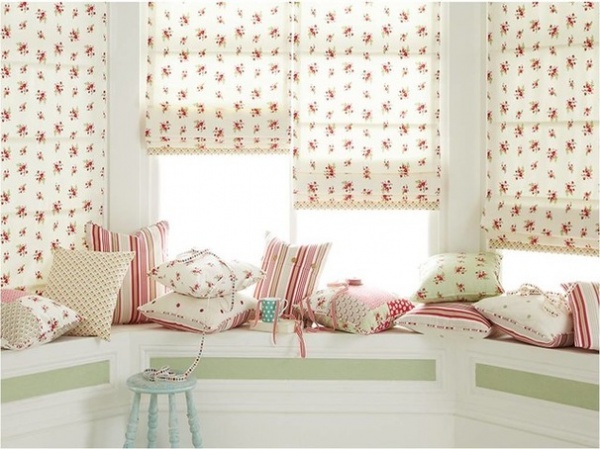
Cost
For a lighter-weight fabric, chintz can be on the pricey side. Carney says that in general, a good chintz runs about $100 to $200 per yard. However, you’ll probably find it for less at discount fabric retailers.
Many chintzes have large patterns, so if you’re considering using chintz on anything bigger than a pillow, you’re going to need more yardage compared with a solid or small-scale pattern.
More fabric stories: Ticking stripe | Grain sacks | Velvet
Related Articles Recommended












